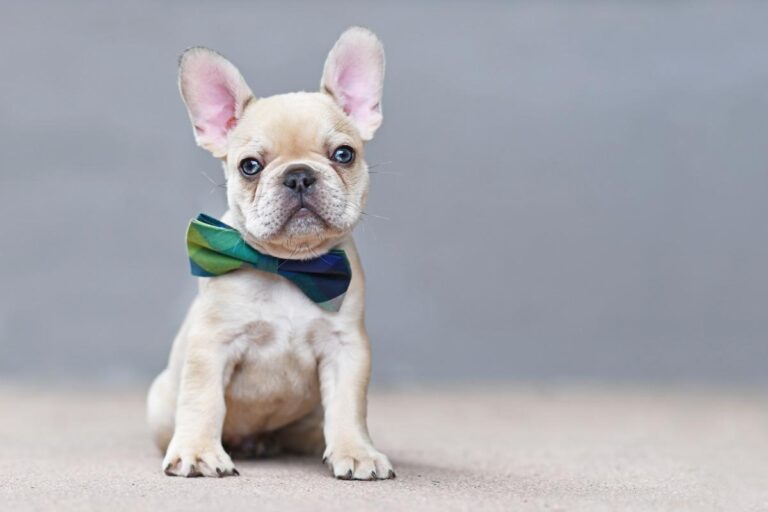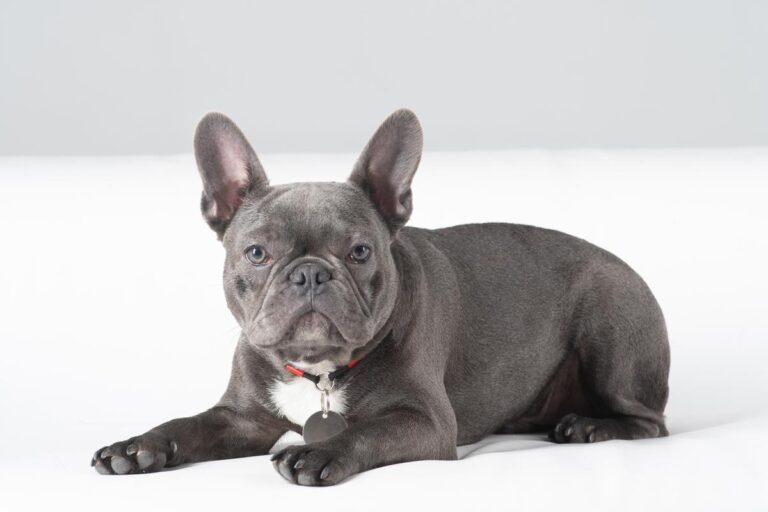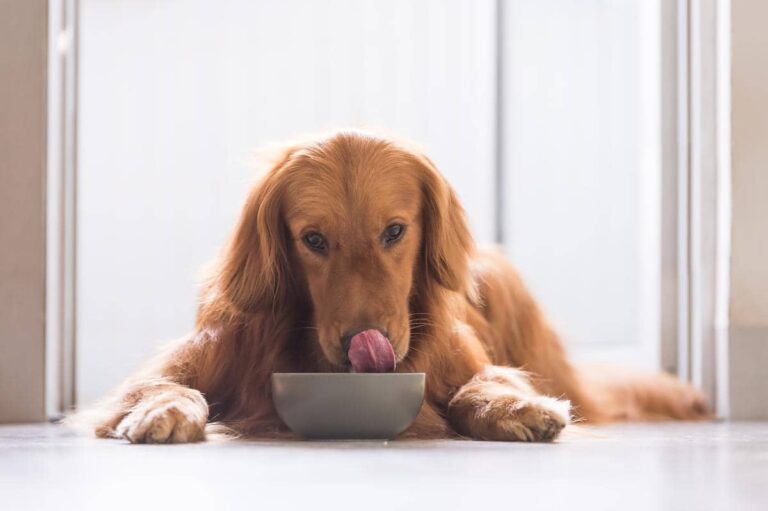Blue Boston Terrier: The Dog Breed with the Big Heart
The Boston Terrier is a small, compact, and muscular dog breed that originated in the United States. The Blue Boston Terrier is a rare variety of the original Boston Terrier.
Boston Terriers are frequently referred to as the “American Gentleman” of dog breeds because of their charming “tuxedo” coat, amiable nature, and big, expressive eyes.
Small and charming, blue Boston Terriers are ideal companions for most families. The Boston Terrier loves kids and playing with them just as much as kids love this dog.
The majority of individuals prefer to keep them because of their stunning color. Here is all the information you need to know about a Blue Boston Terrier if you’re looking for more details about them.
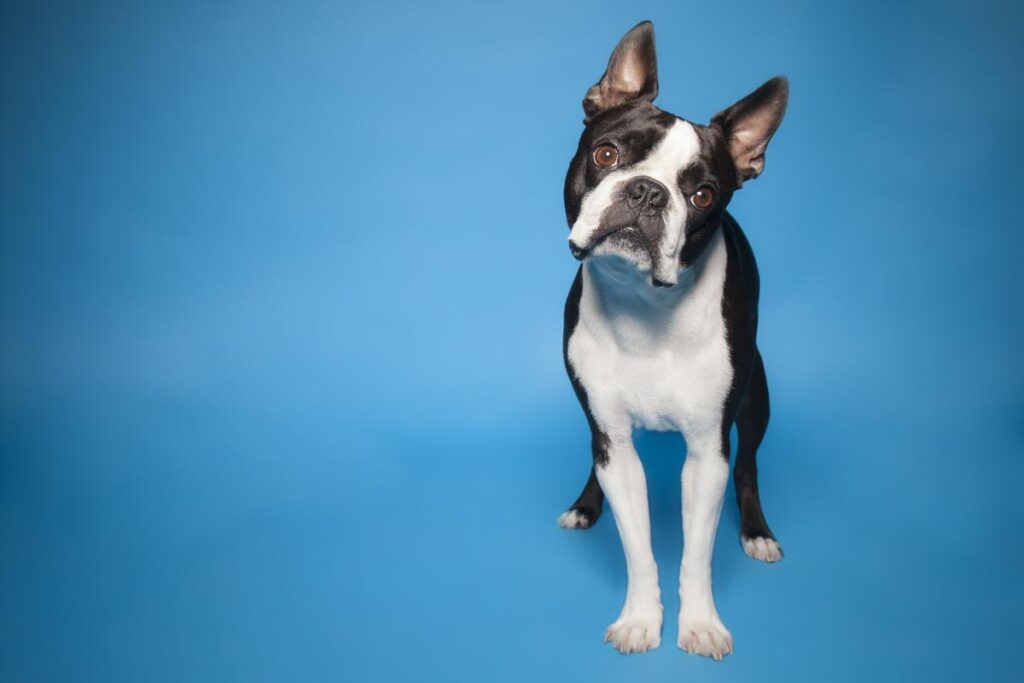
What exactly is a Boston Terrier Blue?
The breed is thought to have started in Boston, Massachusetts, in the 1870s, namely in 1875 when Hooper’s Judge and Burnett’s Gyp were bred. Breeders have since improved it to become what it is today.
Characteristics of a Boston Terrier Blue
| Characteristic | Description |
|---|---|
| Size | Compact and small breed, typically weighing 10-25 lbs |
| Coat Color | Striking blue coat, often with elegant white markings |
| Temperament | Friendly, intelligent, affectionate, and lively |
| Lifespan | Average lifespan of 11-13 years |
| Grooming | Short coat requires minimal grooming, occasional shedding |
| Exercise Needs | Moderately active, regular walks and playtime |
| Diet & Nutrition | Balanced diet, 1/2 to 1 cup of quality dog food daily |
| Health Considerations | Prone to certain genetic health issues, regular vet visits recommended |
| Weight (Male) | Adult males weigh around 10-25 lbs |
| Weight (Female) | Adult females weigh around 10-25 lbs |
| Height (Male) | Height ranges from 15-17 inches |
| Height (Female) | Height ranges from 15-17 inches |
| Coat Texture | Short, sleek coat with fine texture |
| Head Shape | Square-shaped head with short muzzle |
| Eyes | Large, round, dark eyes full of expression |
| Ears | Small, erect ears positioned on the sides of the head |
| Tail | Short, straight tail that complements their body |
| Nose | Black nose, sometimes with blue pigmentation |
| Expression | Alert, intelligent, and curious demeanor |
| Energy Level | Energetic, playful, enjoys interactive activities |
| Trainability | Quick learners, respond well to positive reinforcement |
| Socialization | Generally good with people, children, and other pets |
| Apartment Living | Suitable for apartments due to their small size |
| Vocalization | Tends to be quiet, but may bark at strangers |
Boston Terrier Blues are a captivating blend of features that make them a beloved companion. Their distinctive blue coat, charming expression, and moderate size make them stand out in a crowd.
While they’re energetic and enjoy their playtime, they’re also content with apartment living due to their small stature. Keep their grooming simple and their nutrition balanced for a healthy life.
Remember, regular exercise and vet check-ups are key to their well-being. Whether you’re in search of a loyal friend or a lively playmate, a Boston Terrier Blue might just be the perfect fit for your furry family!
As a result, it is possible to trace the origins of any purebred Boston Terrier to “Burnett’s Gyp” and “Hooper’s Judge.” It’s interesting to note that the blue color represents a genetic abnormality brought on by subpar breeding techniques.
A Boston Terrier’s chromosomal pool undergoes mutation, which results in the color blue. As a result, it appears either blue, grey or silver rather than its original color.
This breed also typically comes in Black and White, Brindle and White, and Seal and White.
Because the American Kennel Club has some particular rules about the hue, there has been a lot of discussion about colors in the dog community.
All naturally occurring Boston dogs, whether black, seal, or brindle, would be unable to join the club.
Genes of the Blue Boston Terrier
How, then, were blue coats introduced into the Boston breed at its very beginning and subsequently eliminated? The color dilution gene, a recessive gene that causes blue coats, contributes to the explanation in part.
Recessive genes can only be expressed in a person when they come from both parents. Non-dilute coats, on the other hand, are a dominant characteristic; Boston puppies only need to acquire the gene for a non-dilute coat from one parent for their coat to be black or seal as opposed to blue.
When two carriers are mated, the dilute gene is partially hidden in some family trees for many generations due to this masking.
Furthermore, only 25% of the puppies born to two Bostons silently having the dilution gene will statistically inherit the gene from both parents and express it in their coat.
It is simple for the gene to be carried down many generations without ever being expressed in Bostons because their pups usually include less than four puppies.
Additionally, breeders can easily avoid blue coats because they are widely regarded as undesirable.
Information Regarding the Blue Boston Terrier breed
Appearance of Full Grown Blue Boston Terrier
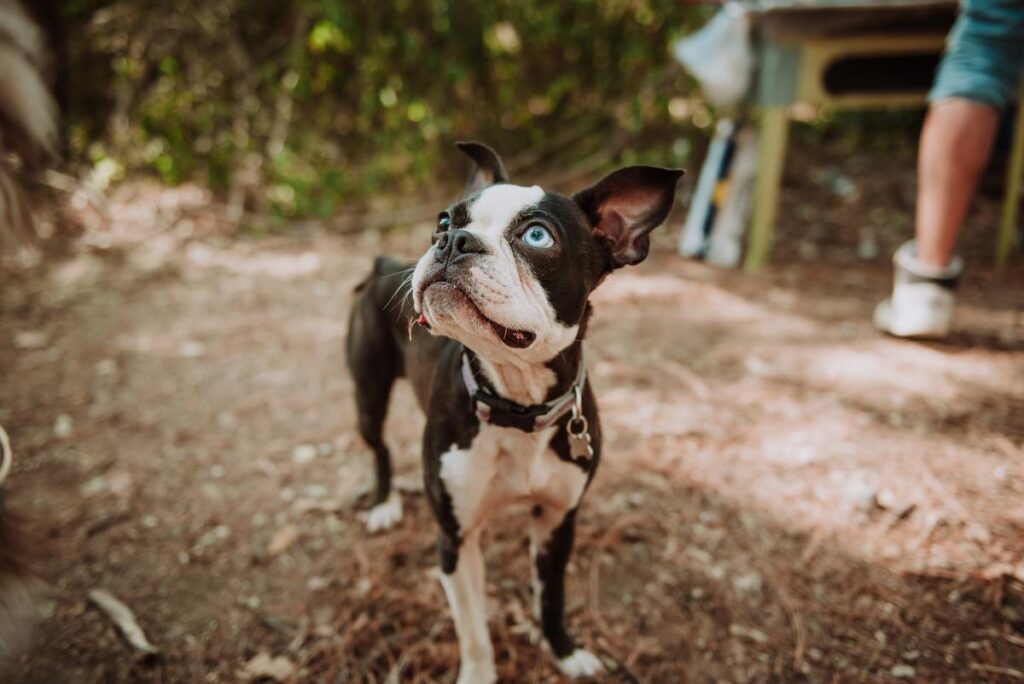
This non-sporting adorable, funny creature seems somewhat startling. They are distinctive due to the blaze between the eyes and banded muzzle.
They are the cutest little critters to have in your residence, with brown eyes and a black nose. They are a friend suitable for kids in the house due to their diminutive size, and because of their small bodies, they may fit wherever on the bed.
Who wouldn’t want another person in the house listening to us? Their erect ears give us the impression that they are constantly engaged in our conversations.
They have the perfect tuxedo appearance, a small body, and a short tail, and make an excellent companion. They are the simplest to maintain due to their slick coat.
Temperament of Merle Boston Terrier
There is no indication that the color dilution gene impacts behavior in blue Boston Terrier puppies; instead, they inherit the same temperament as Bostons in all other hues.
They were first bred to be lap dogs and friends. Breeders searched for dogs with amusing and loving dispositions who regularly sought out human contact when the breed was first developing.
Today’s Bostonians share all of these characteristics as well; they are typically affable, pleasant, and playful.
They are trainable and fairly intelligent, but they don’t always pick things up quickly because they have only ever had to be themselves.
Small stature is typically linked to a higher incidence of undesirable behaviors in dogs. Researchers believe this is the case because when dogs are young, their “bad” behavior doesn’t cause as much bother and people are more likely to overlook it.
Bostons have also been raised through many generations to be companion animals for people, thus they don’t usually handle being left alone well.
You should progressively introduce longer periods of separation before leaving a fully grown blue Boston Terrier alone for any period dogs, even Bostons, are prone to separation anxiety.
WOPET Automatic Smart Feeder Dog Food Dispense with Camera,7L App Control
Boston Terrier Blue Types and Colors of Coats
The common Boston Terrier colors are generally;
- White marks on a brindle
- White markings on a seal
- A dark shade with white markings
However, colors like blue, brown, and even merle do not meet the AKC’s requirements. Perhaps the most distinctive of these is the merle.
It has a spotty coat and blue eyes, though they might not all be blue; one of them might even be black.
Then there is the group that is primarily white with a few spotty black patches spread throughout their bodies and mainly on their heads.
The Boston Terrier in brown is also frequently referred to as one in liver color. Instead of the usual black nose, it has a brown one.
The most renowned of all of them is still the blue Boston Terrier. The thing I find most appealing about it is the color.
Even their nose is blue, and occasionally even their eyes are blue, which is another reason why people tend to adopt or purchase them.
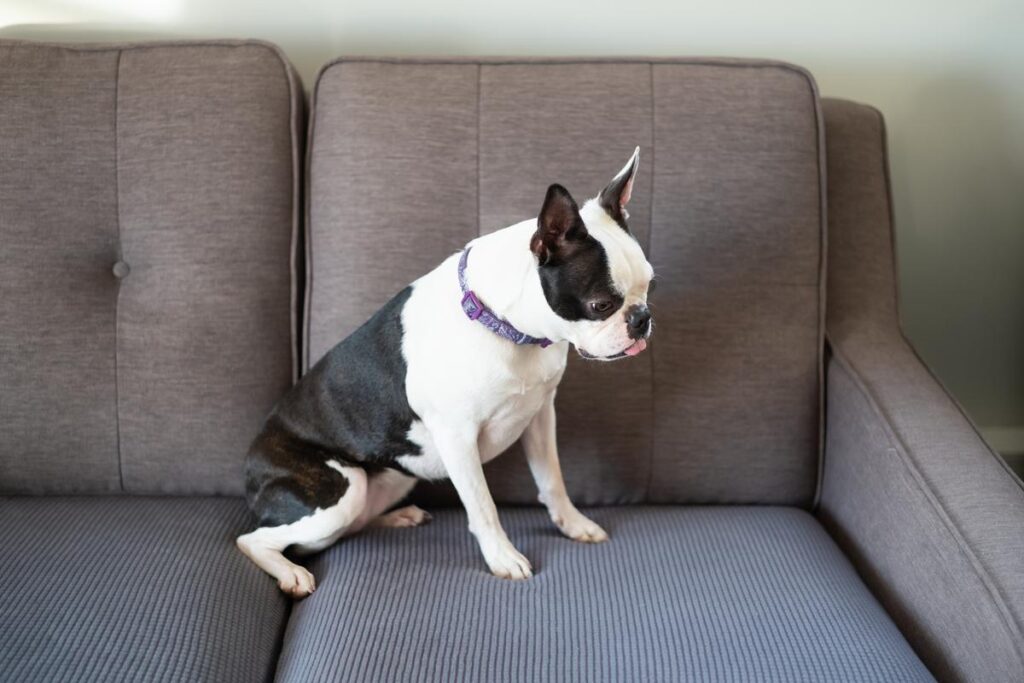
When exposed to sunlight, many dogs have a grey or silver undertone and tint. You might have to spend a very high price for them; it might be as much as $2500. This is because they are becoming to be quite popular.
Many people believe that this price is unreasonable, however, professional breeders must breed particular dogs to get the appropriate colors, thus this may be an explanation for the increase.
The Boston Terrier has a very fine, silky coat. They shed considerably less than other dogs because of this, which also makes them simpler to brush.
To get rid of any bacteria that may be hiding in your dog’s fine coat, it is recommended that you brush your dog twice or three times every week.
What Is the Price of Full Grown Blue Boston Terrier Puppies?
Puppies of the blue Boston Terrier range in price from $600 to $1000. If they are purchased from a reputable breeder that socializes the puppies at a young age, they may cost extra.
- These factors affect the cost of blue Boston Terriers:
- Their standing in the community
- The standing of the breeder
- Age range
- The instruction they had before making the transaction.
- The breeder paid for the hospital expenses.
Expected lifespan of Full Grown Blue Boston Terrier Puppies
Blue Boston Terriers have an 11–13 year lifetime. The average death age is 10.92 years, but some people can live up to 18 years.
A 2010 survey found that the three main causes of death for these people were heart attacks, cancer, and old age.
Size of Full Grown Blue Boston Terrier Puppies
The Blue Boston Terrier often stands 12 to 17 inches tall. Additionally, your dog will experience a variety of bodily changes as they mature, including weight gain.
| Age | Weight |
| 2 | 3 to 8 pounds |
| 4 | 5.5 to 14 pounds |
| 6 | 8 to 18 pounds |
| 8 | 8.8 to 22 pounds |
| 10 | 9.5 to 23 pounds |
| 12 | 9.9 to 24 pounds |
The following three divisions of weight are made.
- 20 to 25 pounds.
- 15 to 19 pounds.
- Less than 15 pounds
Both their environment and the type of food you feed them influence these changes.
Remember that Blue Boston Terriers can weigh between 10 and 25 pounds, depending on their size, whether they are male or female. An overview of weight according to the puppy’s age is given below.
Due to their gender and the size of some puppies, there are weight disparities between them.
For example, your male Blue Boston Terrier may achieve adulthood after one year and stop developing. Conversely, larger Blue Boston Terriers may stop growing at 14 months.
Training Requirements for Merle Blue Boston Terriers
Due to their excitement, training the Blue Boston Terriers is simple. The secret is to just treat them with kindness rather than harshness.
Teach your dog basic manners like stop, stay, sit, and come. You should also work on obedience, socializing, and housebreaking.
Treats work well on blue Boston Terriers, and they take to being trained on a leash. Make sure your dog isn’t just reacting to food, though.
During the housebreaking phase, exercise patience because your puppy could become a little impatient. As a result, pick a fun training regimen and stick to it.
Most Blue Boston Terriers struggle with unnecessary digging, which is a frequent issue. When they have been left alone for prolonged periods period occurs.
So teach them to be solitary when you are away or otherwise occupied. Since these dogs enjoy walking, leash training can be incorporated into your daily routine.
Read More: Dominate the Cute Factor: Teddy Bear Cut for Yorkies!
Health Concerns Among All Boston Terrier Dogs
The enthusiastic canine breed known as the blue Boston Terrier is always up for a game of play. However, there is always a chance that your puppy will experience certain health problems.
The most significant issues can be respiratory and/or ocular issues. However, there are inherited problems that should not be ignored.
Exercise Chart for Merle Boston Terrier Blues:
| Activity | Frequency | Duration |
| Walks | Daily | 20-30 minutes |
| Playtime | Daily | 15-20 minutes |
| Interactive Games | 3-4 times a week | 10-15 minutes |
| Mental Stimulation | Several times a week | 10-15 minutes |
Diet Recommendation:
Boston Terrier Blues thrive on a balanced and nutritious diet to support their energy levels and overall well-being.
Here’s a guideline for their daily food intake:
- High-Quality Dog Food: Opt for a premium dog food brand that is suitable for small breeds and provides the necessary nutrients.
- Portion Control: Feed your Boston Terrier Blue around 1/2 to 1 cup of food per day, divided into two meals. Adjust the portion size based on their activity level, age, and weight.
- Protein: Look for a dog food that contains high-quality protein sources, such as chicken, turkey, or fish. Protein helps maintain muscle mass and supports their active lifestyle.
- Carbohydrates: Choose dog food with complex carbohydrates like brown rice or sweet potatoes. Carbs provide a steady source of energy.
- Healthy Fats: Essential fatty acids, such as omega-3 and omega-6, are beneficial for their skin and coat health. Look for ingredients like flaxseed or fish oil.
- Avoid Harmful Additives: Make sure the dog food is free from artificial colors, flavors, and preservatives.
- Fresh Water: Always provide fresh water for your Boston Terrier Blue to stay hydrated.
Remember, every dog is unique, so it’s a good idea to consult your veterinarian for personalized diet recommendations and portion sizes.
And don’t forget, a balanced diet goes hand in hand with regular exercise to keep your furry friend happy and healthy!
Here’s a list of exercises that are great for keeping your Boston Terrier Blue active and healthy:
- Daily Walks: Take your Boston Terrier Blue for a brisk walk every day. It’s a great opportunity for them to explore, socialize, and burn off energy.
- Play Fetch: Engage in a game of fetch using a ball or a toy. It’s an excellent way to exercise their muscles and satisfy their natural chasing instincts.
- Tug-of-War: Play tug-of-war with a sturdy rope toy. This helps strengthen their jaw muscles and provides mental stimulation.
- Hide and Seek: Hide treats or toys around the house and encourage your dog to find them. It’s a fun way to engage their sense of smell and keep them mentally active.
- Interactive Puzzle Toys: Provide puzzle toys that dispense treats when your dog figures out how to manipulate them. This challenges their problem-solving skills.
- Agility Training: Set up a mini agility course in your backyard or at a park. Use cones, hurdles, and tunnels to create a fun obstacle course for your pup.
- Stair Climbing: If you have stairs, let your Boston Terrier Blue go up and down a few times. It’s a great cardiovascular workout.
- Swimming: If your dog enjoys water, swimming is an excellent low-impact exercise. Just make sure to supervise them closely and ensure their safety.
- Playdates: Arrange playdates with other dogs. Social interaction and playtime with fellow canines provide both physical and mental stimulation.
- Biking: If your dog is accustomed to running alongside a bike, this can be a more intensive exercise. Start slowly and make sure your dog is comfortable with the activity.
- Obedience Training: Incorporate training exercises into playtime. Teach commands like sit, stay, and come, which engage your dog mentally and physically.
- Running: If you’re a runner, consider taking your Boston Terrier Blue with you. Start with short distances and build up gradually.
Food and Dietary Requirements
- Banana: Dogs can enjoy the natural sweetness and health benefits of bananas in moderation.
- Asparagus: A nutritious veggie that can be a crunchy and tasty treat for your furry friend.
- Strawberry: Rich in vitamins, strawberries make a delightful occasional snack for dogs.
- Orange Chicken: Plain cooked chicken without spices or sauces can be a safe protein source for dogs.
- Almond Butter: Avoid almonds, but dogs can indulge in unsalted and unsweetened almond butter as an occasional treat.
- Quesadilla: Plain tortilla with a small amount of cheese can be a simple treat for dogs.
- Pita Bread: A small piece of plain pita bread can be given as an occasional snack.
- Ricotta Cheese: Dogs may enjoy a little ricotta cheese as an occasional treat, but avoid excessive amounts.
- Provolone Cheese: Offer a tiny piece of provolone cheese as a special reward for your furry companion.
- Banana Pudding: Plain banana pudding without additives or artificial sweeteners can be an occasional treat.
- Watermelon: A refreshing and hydrating fruit that dogs can enjoy in small, seedless portions.
- Coffee Chew Wood: Coffee and any type of wood should be kept away from dogs, as they are harmful.
- Oatmeal Cream Pie: Avoid sugary snacks like oatmeal cream pies, as they are not suitable for dogs.
- Teriyaki Sauce: Skip the teriyaki sauce, as the high sodium content is unhealthy for dogs.
- Mushroom Cream Soup: Keep creamy soups, especially those with mushrooms, away from your furry friend.
WOPET Automatic Smart Feeder Dog Food Dispense with Camera,7L App Control
Vitamins and Nutritional Pros and Cons
- Banana:
- Vitamin B6:
- Pros: Supports metabolism, immune system, and red blood cell production.
- Cons: Overconsumption may cause gastrointestinal upset due to high fiber content.
- Vitamin C:
- Pros: Acts as an antioxidant, boosts the immune system, and promotes healthy skin.
- Cons: Dogs produce their own vitamin C, so supplementation is usually unnecessary.
- Vitamin B6:
- Asparagus:
- Vitamin A:
- Pros: Essential for vision, immune function, and cell growth.
- Cons: High-fiber content may lead to stomach upset if given in large quantities.
- Vitamin C:
- Pros: Supports the immune system and helps absorb iron.
- Cons: Overfeeding may lead to gas or mild digestive issues.
- Vitamin A:
- Strawberry:
- Vitamin C:
- Pros: Provides a boost to the immune system and has antioxidant properties.
- Cons: Should be given in moderation due to natural sugars.
- Vitamin C:
- Orange Chicken:
- Vitamin B6:
- Pros: Supports metabolism and brain health.
- Cons: Avoid giving chicken with spices or sauces, which can be harmful.
- Vitamin B6:
- Almond Butter:
- Vitamin E:
- Pros: Protects cells from damage and promotes healthy skin and coat.
- Cons: Almonds themselves can be a choking hazard, so avoid direct consumption.
- Vitamin E:
- Quesadilla:
- Vitamin B6:
- Pros: Supports energy metabolism and nervous system function.
- Cons: High-fat content in cheese may lead to weight gain if given excessively.
- Vitamin B6:
- Pita Bread:
- Various B Vitamins:
- Pros: Essential for energy metabolism and nerve function.
- Cons: Pita bread can be high in carbohydrates, so feed in moderation.
- Various B Vitamins:
- Ricotta Cheese:
- Vitamin A:
- Pros: Important for vision and immune system support.
- Cons: High-fat content, so feed in small amounts to avoid weight gain.
- Vitamin B12:
- Pros: Supports nerve function and red blood cell production.
- Cons: Excessive consumption may lead to gastrointestinal upset.
- Vitamin D:
- Pros: Aids calcium absorption and supports bone health.
- Cons: Over-supplementation can lead to toxicity, as dogs can’t regulate vitamin D as effectively as humans.
- Vitamin K:
- Pros: Crucial for blood clotting and bone health.
- Cons: Excessive vitamin K can interfere with blood-thinning medications.
- Calcium:
- Pros: Essential for bone and teeth health, muscle function, and nerve transmission.
- Cons: Over-supplementation can lead to skeletal problems and urinary issues.
- Vitamin A:
- Provolone Cheese:
- Vitamin A, Vitamin B12, Vitamin K, Calcium:
- Pros: Similar to ricotta cheese, these vitamins and minerals offer various health benefits.
- Cons: High-fat and sodium content, so feed in moderation to avoid health issues.
- Vitamin A, Vitamin B12, Vitamin K, Calcium:
- Banana Pudding:
- Vitamin B6:
- Pros: Supports metabolism and various body functions.
- Cons: Pudding may contain added sugars and artificial ingredients, which are not suitable for dogs.
- Vitamin B6:
- Watermelon:
- Vitamin A, Vitamin B6, Vitamin C:
- Pros: Provide essential vitamins and hydration.
- Cons: Remove seeds and feed seedless watermelon in small portions to prevent choking.
- Vitamin A, Vitamin B6, Vitamin C:
Remember to tailor the exercises to your dog’s individual needs and preferences. Regular physical activity not only keeps your Boston Terrier Blue fit but also strengthens the bond between you and your furry friend!
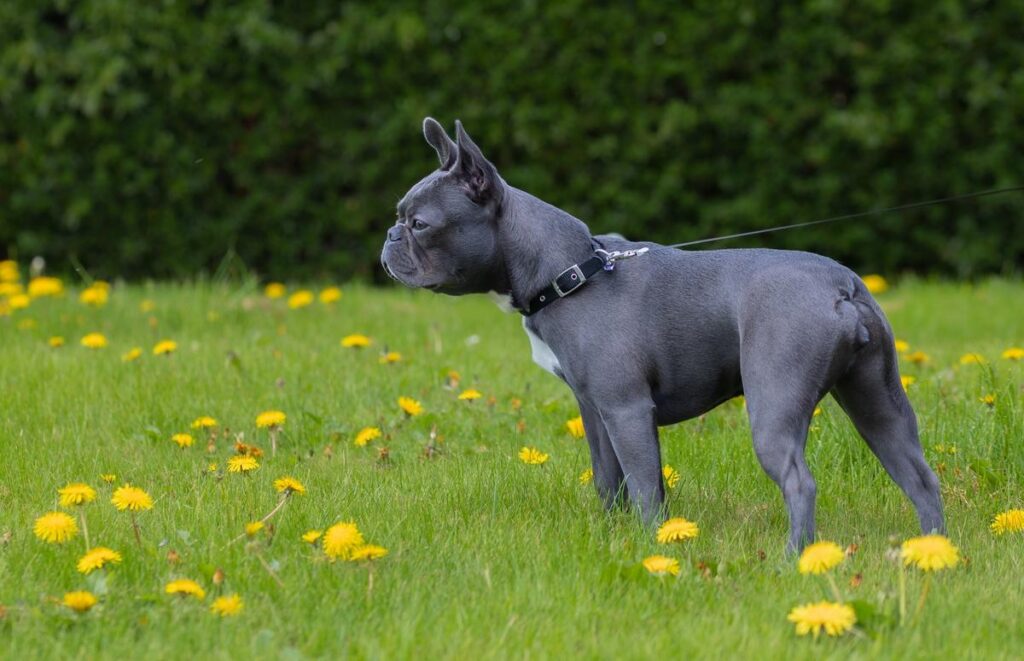
Your blue Boston Terrier may become ill with parvo, rabies, or distemper, but with the right vaccinations, these are manageable.
Health Issues of Boston Terrier Blue Eyes
Due to their unusual coloration, blue Boston Terriers are particularly vulnerable to certain health hazards.
Let’s start by talking about some ailments that Boston Terriers in general is prone to.
Breath Problems Boston Terrier Blue Eyes
The Boston Terrier breed is prone to brachycephalic conditions. Heavy breathing, snoring, and snoring are all signs of respiratory issues.
They may cause laryngeal and nasal resistance. Despite being inherited, breathing issues are still treated. The solution is medications through food and a healthy diet.
Boston Terrier Blue Eyes Obesity issues
For a petite dog breed like the Boston Terrier, obesity is quite harmful. In addition to causing metabolic, digestive, and cardiac problems, it weakens the joints.
Due to their high risk of food allergies, Boston Terriers should only be given little amounts of different foods.
Merle Boston Terrier Orthopedic Conditions
The most prevalent orthopedic problem in Boston Terriers is patellar luxation, which is also the most serious.
Patellar luxation left untreated can lead to issues like arthritis and anterior cruciate ligament damage.
Pain, limping, difficulty stretching the legs, and laziness are all symptoms. Be wary of hip dysplasia in addition to hemivertebra and patellar luxation.
Merle Boston Terrier Skin Problems
Atopy is the name for skin allergies in Boston Terriers. Pyoderma, demodectic mange, and mast cell tumors can all be caused by atopy.
Skin, feet, and paws are all impacted. You can surmise that your dog has a skin disease if it is scratchier than usual and frequently gets ear infections.
You shouldn’t be surprised by the fact that Boston Terriers are prone to hair loss.

Merle Boston Terrier Hearing problems
Regular ear infections can cause deafness in addition to bothering your dog. Consult your veterinarian if you notice any signs, such as a bad odor, redness, or itching.
Merle Boston Terrier Eye Problems
There is a tendency for eye problems in Boston Terriers. As people get older, their likelihood of going blind rises. However, with the right treatment, this illness might be prevented.
If your dog frequently scratches his eyes, a corneal ulcer may be the issue. The corneal degeneration that could result from this ulcer is painful and could make you blind.
Age-related cataracts are a common issue for Boston Terriers. It is a disorder where the dog has hazy eyes. Diabetes can lead to cataracts.
Cherry eye, dry eye, glaucoma, and entropion are additional eye conditions.
Dietary Needs for Blue Boston Terriers
Giving your dog 1 and a half cups of dry food each day is recommended. Keep in mind that your dog’s demands may change depending on its size, exercise level, and metabolism.
For them to receive the nutrients needed for healthy growth, you should also provide them with the essential calories each day.
But watch out for Blue Boston Terriers, who enjoy feasting. To keep them from getting fat, their food intake must be controlled.
Additionally, steer clear of foods that employ grains as a source of carbohydrates because they may cause your dog’s bloating.
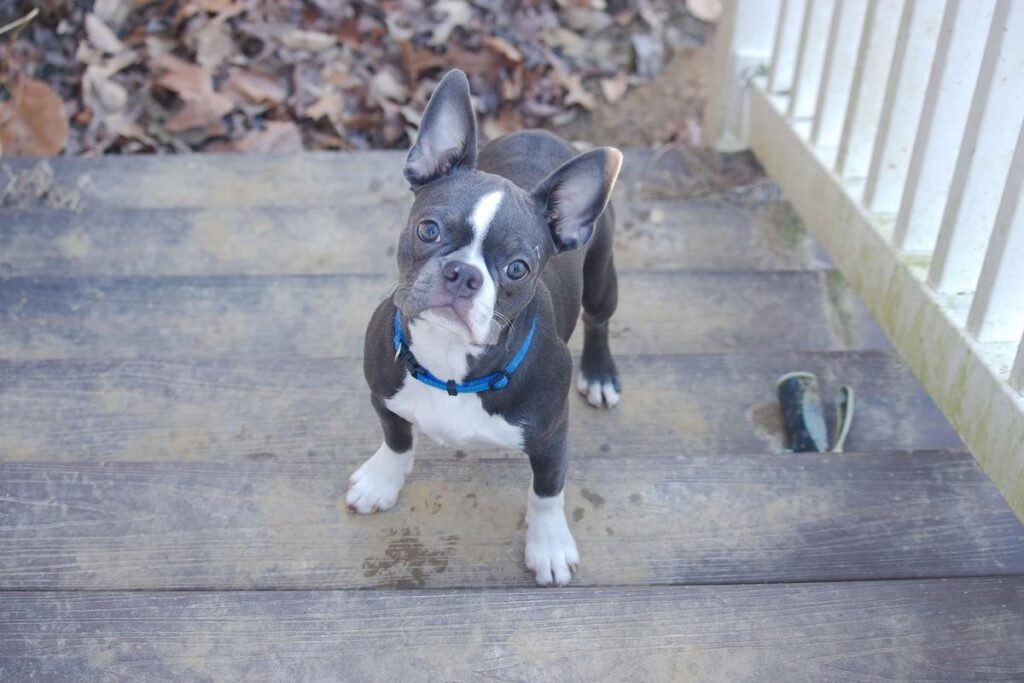
Feed your dog high-quality food with protein content to help reduce this issue. Puppies typically need to be fed three to four times a day, whereas older dogs only need to be eaten once.
A table summarizing the serving size for dogs of various weights can be seen below.
| Weight in pounds | Size of servings |
| 5 | Half to five Cups each day |
| 10 | Three-fourths to one cup each day. |
| 20 | One to two cups each day. |
Conclusion
The Blue Boston Terrier is an endearing and appealing variant of the traditional Boston Terrier breed. They stand out due to their distinctive blue-grey coat, which makes them an interesting and distinctive friend.
Blue Boston Terriers have all the adorable characteristics that make Boston Terriers such popular dogs, despite not being recognized by the AKC due to their unique coat color.
These loving, perceptive, and adaptable dogs are wonderful companions for both individuals and families and are well-adapted to a variety of living arrangements.
Working with a responsible breeder that puts the health and well-being of their dogs first is essential because selective breeding can occasionally result in health problems like Color Dilution Alopecia.
A Blue Boston Terrier can be a wonderful and adoring addition to your home with the right upbringing, socialization, and training.
They are a genuinely exceptional breed that will win over dog lovers all over the world due to their distinctive looks and affectionate personalities.
Read More: Enchanting Lilac Pitbull: A Rare Beauty Among Canines
You’ll fall in love the instant you hold one of these little ones. The blue Boston Terrier is a gentleman at heart and a loyal life companion.

FAQ’S
Q: Can Boston terriers have blue eyes?
A: Brown eyes are typically found in Boston Terriers. According to the Boston Terrier Club of America’s breed standard, Bostons cannot have blue eyes.
On the other hand, some Boston Terriers have one or both blue eyes.
Q: Can a blue Boston terrier be AKC registered?
A: The American Kennel Club (AKC) does not “officially” recognize blue Boston terriers. Therefore, Blue & White lacks a title. However, this shade of color is classified as brindle.
This means that a Boston that seems blue can be registered using the marking of brindle and white as long as you have registered parents.
Q: Is a Boston terrier with blue eyes okay?
A: One blue eye in your Boston Terrier is usually nothing to worry about. Two brown eyes are common for Boston Terriers, thus a blue eye indicates a genetic anomaly.
The primary concern is that this genetic anomaly may be linked to an elevated chance of deafness.
Q: What is a blue Boston terrier?
A: A Blue Boston Terrier’s blue is diluted from the traditional Boston’s black. This results from a mutation in the Blue Boston Terrier’s chromosomal pool.
A Blue Boston thus emerges with a grey, silver, or blue coat rather than a black one.
Q: How much is a blue Boston terrier?
A: Blue Boston Terrier puppies range in price from $600 to $1000. If they are purchased from a reputable breeder that socializes the puppies at a young age, they may cost extra.
